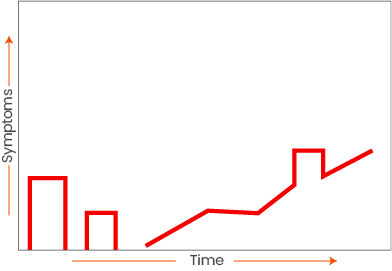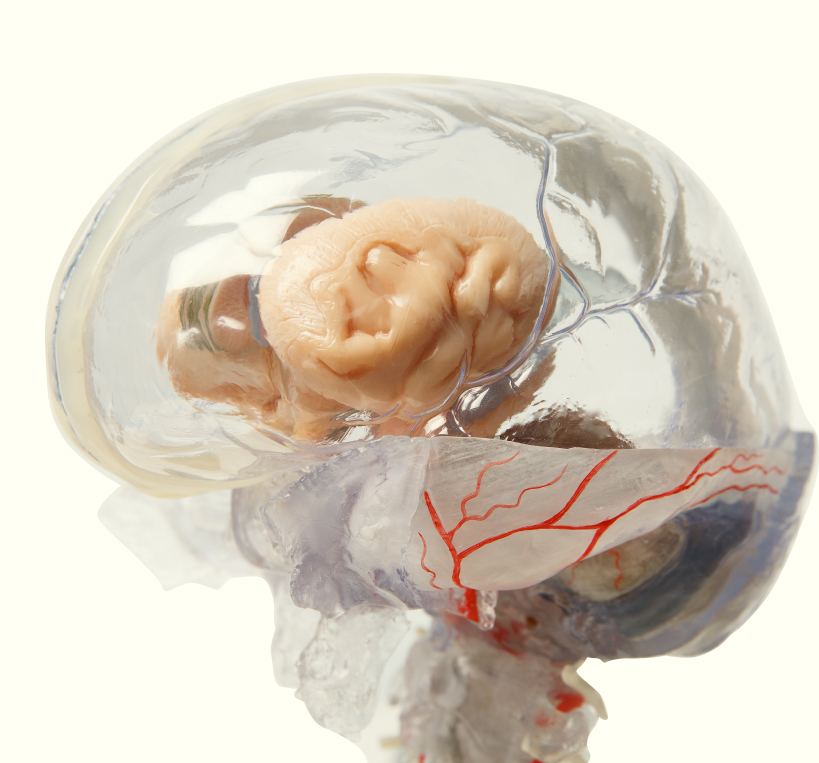
Multiple Sclerosis (MS) doesn’t have just one face – and no preference for wrinkles. It usually affects young people between the ages of 20 and 40. And although it occurs 2 to 3 times more often in women, it can affect anyone at any age.
Today, 2.8 million people worldwide have MS.
In Brazil, about 40,000 people live with the disease, which is chronic and incurable, but not fatal. And if the target audience and symptoms are multiple, so are the treatment possibilities.
Therefore, it is important to better understand the details of the disease, be aware of the signs, and seek a neurologist at the slightest suspicion. And, if you know someone who has the disease, you can never offer too much support.

What Multiple
Sclerosis Means
Multiple Sclerosis (MS) is considered an autoimmune disease. In other words, it is a malfunction of the immune system that, instead of defending the body, begins to understand that proteins from cells in the body are invaders and to send defense cells to isolate and attack them.
In the case of MS, it is the sheath of the neurons, called myelin, which suffers the attack. It works like the cover of an electrical wire: it is a conductor, but it also helps maintain the structure of the neuron.
When the wire gets peeled off (i.e., when the myelin is lost), the neuron’s functions are impaired, and the flow of electrical impulses along the nerve fibers is interrupted.


Since this damage happens in different places and at different times, the symptoms and the intensity of the damage vary greatly for each person.
What are the causes of Multiple Sclerosis?
Although the exact cause of the disease is not known, there are some environmental and genetic factors that may be associated with the risk of developing the disease.

Environmental Factors
• Infection by some viral and bacterial agents, such as herpesvirus type 6, Epstein-Barr virus, human endogenous retrovirus
• Immaturity of the immune system, which may be caused by little exposure to bacteria and parasites during childhood
• Low vitamin D levels, due to little sun exposure
• Obesity and smoking

Genetic Factors
To date, it is known that there are more than 100 genes that can increase the risk for Multiple Sclerosis, and each one can increase the chances by up to 6%.
MS Types

Relapsing-Remitting
Is the most common type, characterized by outbreaks that may disappear after a few days or weeks, promoting almost complete recovery or with some sequelae.

Primary Progressive
Is characterized by mild symptoms, but worsening over time. Physical limitations can extend over months and years. It affects a small percentage of the population and

Secondary Progressive
At first, symptoms are similar to those of relapsing-remitting; then there is development of progressive disability and increased outbreaks, which worsen the picture.

Clinically Isolated Syndrome
The person may have the first outbreak and never have any other symptoms again.
Fight prejudice, know the symptoms
People with multiple sclerosis can have different symptoms, some of which may not be noticeable to others.
Therefore, it is important to know them and be a source of support and information for those in need.
“Look at that slacker. At that age and sitting in the priority seat. Shame on her”.
MS usually causes a number of balance and coordination problems, and this requires care in everyday life. These include:
• Loss of balance
• Tremors
• Instability when walking
• Dizziness and nausea
• Lack of coordination
• General weakness
• Spasticity in the lower limbs (stiffness of muscles, tingling sensation and pain, among others)
“Oh, stop it. Can’t stand a party and only go when there’s a place to sit?”
Often confused with laziness, fatigue is a very common symptom in people with Multiple Sclerosis.
It involves a momentary sensation of exhaustion, which can be incapacitating (even disproportionately to the activity performed).
“He’s going to end up in a wheelchair, huh!?”
Although it can cause mobility problems, not all cases involve limitations (much less definitive limitations).
“You know she won’t live long, right?”
The disease is chronic and still has no cure, but it is not fatal
However, today, technology and the advancement of treatments already allow the patients diagnosed with MS to have quality of life and comfort, with minimal limitations.
Other Symptoms


On Speech
Slower speech, difficulty expressing oneself, and a shaky voice, as well as difficulty swallowing liquid, pasty, or solid food.


In Sight
Blurred vision and diplopia
(double vision).


In Cognition
Memory impairment and slowness
in performing tasks.


In Emotions
Depression, anxiety, irritation, mood swings, and bipolar disorder.
Diagnosis
To date, there is no single test that can diagnose Multiple Sclerosis, nor can it identify the disease in its early stages.
As it is a disease with symptoms that can be mistaken for other clinical conditions, the diagnosis is made by exclusion and includes analysis of signs and symptoms, laboratory tests, and imaging.




How to treat MS?
Each patient with MS has a different need, and it is the doctor who prescribes the appropriate treatment for each case and each moment of the disease. Early diagnosis and proper management of the case define when and which drugs can be used, including Interferons and Azathioprine, for example.
Recommendations
Although there is still no cure for Multiple Sclerosis, habits such as a good diet and physical activity can help keep the patient’s quality of life for a longer period of time.
And, most importantly, to count on multidisciplinary teams during the treatment including neurology, neuropsychology, psychiatry, psychology, speech therapy, occupational therapy, and physical therapy professionals, among others.
Support Network
The shock and the feeling of uncertainty after the diagnosis of Multiple Sclerosis is almost unanimous. And this shock is reflected to all who live with the disease. Therefore, in addition to the treatments recommended by the medical team, the support of family members and loved ones is fundamental.
How to help a family member with MS?
• Learn about the disease from reliable sources
• Be understanding, patient, and sensitive
• Show respect towards the situation
• Be supportive and use positive words
• Encourage all treatments
• Avoid criticism and demands
Care of Caregivers
The treatment of patients with multiple sclerosis requires the action of the medical team on several fronts.
But the care doesn’t stop there, since many people with the disease need support in their daily lives, from transportation to the doctor to preparing meals.
Usually family members, these caregivers do not always take on the role willingly, and since this routine is very demanding, it is important to be caring with caregivers:
• Set task limits
• Seek to delegate and share responsibilities
• Ensure periodic time off for rest and leisure
• Find someone with whom to share the feelings, anxieties and achievements






